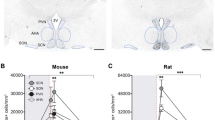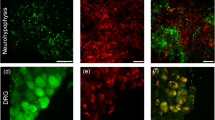Abstract
Background
In adult rats, N-methyl-D-aspartate (NMDA) receptors have been implicated in the central control of body fluid homeostasis, as intracerebroventricular (ICV) injection of NMD A receptor antagonists suppresses stimulated drinking behavior. Fetal swallowing occurs at a significantly higher rate as compared to adult drinking, contributing to amniotic fluid volume regulation and fetal gastrointestinal development. The aim of present study was to determine the role of central NMD A receptors in the modulation of fetal swallowing activity.
Methods
Eight time-dated pregnant ewes and fetuses were chronically prepared with fetal vascular and ICV catheters, electrocorticogram (ECoG), and esophageal electromyogram electrodes and studied at 130 ± 1 days’ gestation. Following an initial 2-hour baseline period (time 2h), the NMD A receptor antagonist, dizocipline (1 mg), was injected ICV. At time 4h, the dose of dizocipline was repeated, together with angiotensin II (Angll, 6.4 μg). Fetal swallowing was monitored for 2 hours after each injection. Four of these fetuses also received an identical control study (on an alternate day) in which dizocipline was replaced with artificial cerebrospinal fluid (aCSF).
Results
ICV dizocipline injection nearly abolished spontaneous fetal swallowing activities (0.6 ± 0.1 to 0.2 ±0.1 swallows/min; P < .001). ICV Angll in the presence of dizocipline did not demonstrate a dipsogenic effect on fetal swallowing (0.1 ± 0.1; P <.001). In the control study, ICV injection ofaCSF did not change fetal swallowing activity (1.0 ± 0.1 swallows/min), while ICV Angll resulted in a significant increase in fetal swallowing (2.0 ±0.1 swallows/min; P < .001).
Conclusions
This study demonstrates that central NMDA-glutamate receptor-mediated activity contributes to the high rate of spontaneous and Angll-stimulated fetal swallowing. We speculate that reduced NMDA receptor expression within the forebrain dipsogenic neurons may account for observed differences in drinking activities between the fetus/neonate and the adult.
Similar content being viewed by others
References
Petrikovsky BM, Schifrin B, Diana L. The effect of fetal acoustic stimulation on fetal swallowing and amniotic fluid index. Obstet Gynecol 1993;81:548–559.
Fujino Y, Agnew CL, Schreyer P, Ervin MG, Sherman DJ, Ross MG. Amniotic fluid volume response to esophagetal occlusion in fetal sheep. Am J Obstet Gynecol 1991;165:1620–1626.
Sherman DJ, Ross MG, Day L, Ervin MG. Fetal swallowing Correlation of electromyography and esophageal fluid flow. Am J Physiol 1990;258:R1386–R1394.
Nijland MJ, Kullama LK, Ross MG. Maternal plasma hypoosmolality: effects on spontaneous and stimulated ovine fetal swallowing. J Matern Fetal Med 1998;7:165–171.
El-Haddad MA, Ismail Y, Gayle D, Ross MG. Central angiotensin II AT1 receptors mediate fetal swallowing and pressor responses in the near term ovine fetus. Am J Physiol Regul Integr Comp Physiol 2004 Apr;288(4):R1014–R1020. Epub 2004 Nov 18.
El-Haddad MA, Chao CR, Ma S, Ross MG. Nitric oxide modulates angiotensin II-induced drinking behavior in the near-term ovine fetus. Am J Obstet Gynecol 2000;182:713–719.
El-Haddad MA, Chao CR, Ma SX, Ross MG. Nitric oxide modulates spontaneous swallowing behavior in near-term ovine fetus. Am J Physiol 1999;277:R981–R986.
El-Haddad MA, Chao CR, Ma SX, Ross MG. Neuronal NO modulates spontaneous and ANG II-stimulated fetal swallowing behavior in the near-term ovine fetus. Am J Physiol Regul Integr Comp Physiol 2002;282:R1521–R1527.
El-Haddad MA, Chao CR, Sayed AA, El-Haddad H, Ross MG. Effects of central angiotensin II receptor antagonism on fetal swallowing and cardiovascular activity. Am J Obstet Gynecol 2001;185:828–833.
Weisinger RS, Blair-West JR, Burns P, Denton DA, Tarjan E. Role of brain angiotensin in thirst and sodium appetite of rats. Peptides 1997;18:977–984.
Xu Z, Lane JM, Zhu B, Herbert J. Dizocilpine maleate, an N-methyl-D-aspartate antagonist, inhibits dipsogenic responses and C-Fos expression induced by intracerebral infusion of angiotensin II. Neuroscience 1997;78:203–214.
Zhu B, Herbert J. Angiotensin II interacts with nitric oxide-cyclic GMP pathway in the central control of drinking behaviour: Mapping with c-fos and NADPH-diaphorase. Neuroscience 1997;79:543–553.
Pickel VM, Chan J. Co-localization of angiotensin II and gamma-aminobutyric acid in axon terminals in the rat subformical organ. Neurosci Lett 1995;193:89–92.
Hu L, Zhu DN, Yu Z, Wang JQ, Sun ZJ, Yao T. Expression of angiotensin II type 1 (AT(1)) receptor in the rostral ventrolateral medulla in rats. J Appl Physiol 2002;92:2153–2161.
Phillips MI, Summers C. Angiotensin II in central nervous system physiology. Regul Pept 1998;78:1–11.
Zhu DN, Moriguchi A, Mikami H, Higaki J, Ogihara T. Central amino acids mediate cardiovascular response to angiotensin II in the rat. Brain Res Bull 1998;45:189–197.
Meek JL, Neff NH. Is cerebrospinal fluid the major avenue for the removal of 5-hydroxyindoleacetic acid from the brain? Neuropharmacology 1973;12:497–499.
Evans CA, Reynolds JM, Reynolds ML, Saunders NR, Segal MB. The development of a blood-brain barrier mechanism in foetal sheep. J Physiol 1974;238:371–386.
Ross MG, Kullama LK, Ogundipe A, Chan K, Ervin MG. Central angiotensin II stimulation of ovine fetal swallowing. J Appl Physiol 1994;76:1340–1345.
Harding R, Sigger JN, Poore ER, Johnson P. Ingestion in fetal sheep and its relation to sleep states and breathing movements. Q J Exp Physiol 1984;69:477–486.
Zini S, Fournie-Zaluski MC, Chauvel E, Roques BP, Corvol P, Llorens-Cortes C. Identification of metabolic pathways of brain angiotensin II and III using specific aminopeptidase inhibitors: Predominant role of angiotensin III in the control of vasopressin release. Proc Natl Acad Sci U S A 1996;93:11968–11973.
Shearer BG, Lee S, Oplinger JA, Frick LW, Garvey EP, Fuffine ES. Substituted N-phenylisothioureas: Potent inhibtors of human nitric oxide synthase with neuronal isoform selectivity. J Med Chem 1997;40:1901–1905.
L Rochelle FT Jr, North WG, Stern P. A new extraction of arginine vasopressin from blood: the use of octadecasilyl-silica. Pflugers Arch 1980;387:79–81.
Skowsky WR, Rosenbloom AA, Fisher DA. Radioimmunoassay measurement of arginine asopressin in serum: Development and application. J Clin Endocrinol Metab 1974;39:278–287.
Baron SP, Woods JH. Dipsogenic effects of excitatory amino acid agonists in pigeons. J Pharmacol Exp Ther 1993;264:918–921.
Ishii T, Moriyoshi K, Sugihara H, et al. Molecular characterization of the family of the N-methyl-D-aspartate receptor subunits. J Biol Chem 1993;268:2836–2843.
McBain CJ, Mayer ML. N-methyl-D-aspartic acid receptor structure and function. Physiol Rev 1994;74:723–760.
Somogyi P, Minson JB, Morilak D, Llewellyn-Smith I, McIlhinney JR, Chalmers J. Evidence for an excitatory amino acid pathway in the brainstem and for its involvement in cardiovascular control. Brain Res 1989;496:401–407.
Tanaka J, Hayashi Y, Shimamme S, Nomura M. Ascending pathways from the nucleus of the solitary tract to the subfornical organ in the rat. Brain Res 1997;777:237–241.
Xu Z, Herbert J. Effects of intracerebroventricular dizocilpine (MK801) on dehydration-induced dipsogenic responses, plasma vasopressin and c-fos expression in the rat forebrain. Brain Res 1998;784:91–99.
Ismay MJ, Lumbers ER, Stevens AD. The action of angiotensin II on the baroreflex response of hte conscious ewe and the conscious fetus. J Physiol 1979;288:467–479.
Reid IA. Interactions between ANG II, sympathetic nervous system, and baroreceptor reflex in regulation of blood pressure. Am J Physiol 1992;262:E763–E778.
Kaur C, You Y, Singh J, Peng CM, Ling EA. Expression of Fos immunoreactivity in some catecholaminergic brainstem neurons in rats following high-altitude exposure. J Neurosci Res 2001;63:54–63.
Olney JW, Wozniak DF, Jevronic-Todorovic V, Ikonomidou C. Glutamate signaling and the fetal alcohol syndrome. Ment Retard Dev Disabil Res Rev 2001;7:267–275.
Collins GB, Brosnihan KB, Zuti RA, Messina M, Gupta MK. Neuroendocrine, fluid balance, and thirst responses to alcohol in alcoholics. Alcohol Clin Exp Res 1992;16:228–233.
Heyward P, Eisenhofer G. Ethanol-induced inhibition of the drinking response to hypertonic saline in the rat. Pharmacol Biochem Behav 1985;22:493–496.
Borges G, Lopez-Cervantes M, Medina-Mora ME, Tapia-Conyer R, Garrido F. Alcohol consumption, low birth weight, and preterm delivery in the National Addiction Survey (Mexico). Int J Addict 1993;28:355–368.
Author information
Authors and Affiliations
Corresponding author
Additional information
Mostafa A. El-Haddad is deceased.
Supported by Grants No. ROl DK43311 (M.G.R.) and K08 HD 40251-02 (M.A.E.) from the National Institutes of Health and the March of Dimes.
The authors thank Linda Day for her technical assistance during these studies.
Rights and permissions
About this article
Cite this article
El-Haddad, M.A., Chao, C.R. & Ross, M.G. N-Methyl-D-Aspartate Glutamate Receptor Mediates Spontaneous and Angiotensin II—Stimulated Ovine Fetal Swallowing. Reprod. Sci. 12, 504–509 (2005). https://doi.org/10.1016/j.jsgi.2005.06.003
Published:
Issue Date:
DOI: https://doi.org/10.1016/j.jsgi.2005.06.003




